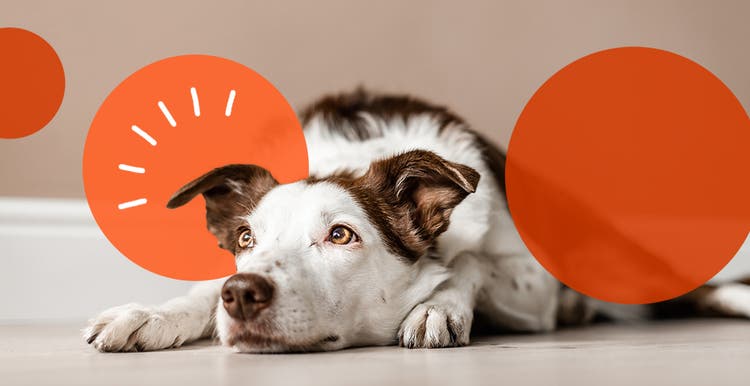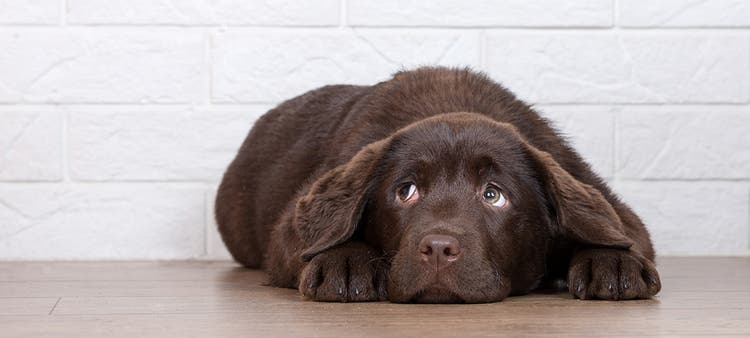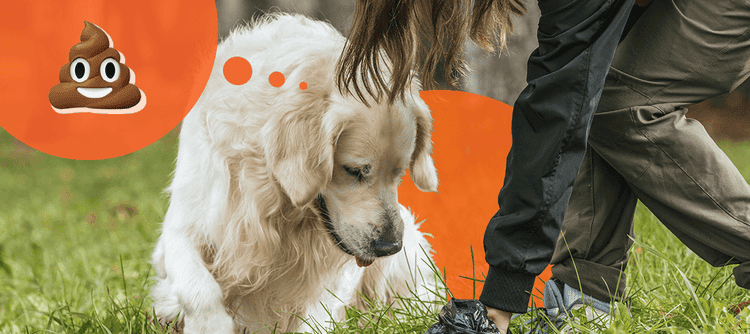How to stop a dog from peeing in the house.
Every dog owner breathes a sigh of relief when their dog is housetrained. So it can be more than a little disappointing when your dog starts urinating indoors. If you've spoken to your vet and eliminated any health issues as a possible cause, consider behavioral reasons for why your dog keeps peeing in the house.
Why Is My Dog Peeing in the House?
The good news is there are usually easy fixes to stop a dog from peeing in the house. First, determine why your dog is exhibiting this behavior.
Your Dog Isn’t Fully Housetrained
Sometimes the solution is simply that your dog still needs some housetraining. Go back to the basics:
- Establish a routine with a regular feeding and go-outside schedule. If you have a puppy, take them out every one to two hours. If your schedule makes that difficult, consider hiring a dog walker.
- Use positive reinforcement, such as praise and treats, as soon as your dog pees outside.
- Supervise your dog carefully. Watch for signals they need to relieve themselves, such as whining, circling, sniffing or pawing at the door. Take them outside as soon as they show these signs.
- When you aren’t physically present, keep your dog in a restricted area or crate. Make sure it’s large enough for their comfort, but small enough that they won’t want to go to the bathroom there.
Your Dog Is Marking Their Territory
Dogs urine-mark to assert dominance over territory. This often happens after adding a new pet or person to the household. Always clean up your dogs urine right away, as the lingering smell can often lead to more marking.
Marking is most common with unneutered male dogs; getting your dog neutered or spayed often solves the problem. If you go too long without getting your dog spayed or neutered, however, urine marking can become a much more difficult habit to break.
Your Dog Is Anxious or Submissive
Have you noticed your dog peeing when they're approached by people or when they hear loud noises? Do they take on submissive postures such as crouching, tail tucking or exposing their belly? These are signs of submissive urination, which is often a result of an anxiety disorder or a history of harsh treatment.
Use positive reinforcement and keep your dog on a proper routine to soothe their anxiety. Other steps to take include the following:
- Keep greetings low-key and calm, so your dog doesn't perceive others' movements as an act of dominance.
- Introduce them to new people and situations slowly and carefully, creating a positive and calm experience.
- Get down on their level when you interact with them and ask others to approach them the same way. Sit on your knees to pet them instead of bending over. Approach them from the side, not the front. And pet them on the chin rather than on the top of their head.
- If your dog is extremely anxious, speak to your vet. They may recommend medications to help ease their anxiety.
Your Dog Has Separation Anxiety
Some dogs experience separation anxiety when their owners leave them home alone. Barking, destructive behavior, obsessive pacing and relieving themselves indoors are a few of the symptoms dogs show. Learn more about how to curb separation anxiety in dogs.
Your Dog's Routine Has Changed
Life changes happen all the time, whether a new baby arrives, you get a new job or your family moves to a new home. As humans, we adjust our routines to fit these changes. Dogs, however, are creatures of habit and may struggle with sudden changes to their routines.
Hiring a dog walker is a good way to keep your dog on the schedule they're used to. If you would rather them adjust to the new routine, be sure to establish a regular feeding and watering schedule, followed immediately by bathroom breaks.
Although it's frustrating, remember that peeing in the house isn't uncommon in dogs. Don't punish your pet by sticking their nose in the urine, as this will just cause fear and confusion — dogs can't make connections between their past actions and in-the-moment punishment. Positive reinforcement, talking to your vet and paying close attention to changes in routine can all help curb this problem.







